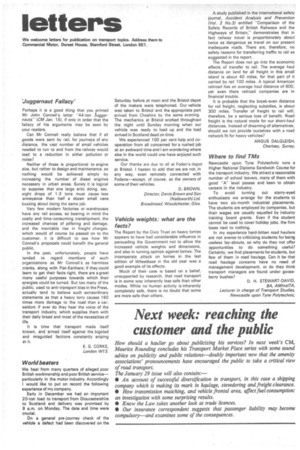Vehicle weights: what are the facts?
Page 34

If you've noticed an error in this article please click here to report it so we can fix it.
The Report by the Civic Trust on heavy lorries appears to have had considerable influence in persuading the Government not to allow the increased vehicle weights and dimensions, and also in turning opinion against lorries. The intemperate attack on lorries in the last edition of Wheelbase in the old year was a good example of its effects.
Much of their case is based on a belief, unsupported by research, that road transport is in some way inherently less safe than other modes. While no human activity is inherently completely safe, there is no doubt that some are more safe than others. A study published in the international safety journal, Accident Analysis and Prevention (Vol. 2 No.3) entitled "Comparison of the Safety Records of British Railways and the Highways of Britain," demonstrates that in fact railway travel is proportionately about twice as dangerous as travel on our present inadequate roads. There are, therefore, no safety reasons for transferring traffic to rail as suggested in the report.
The Report does not go into the economic effects of transfer to rail. The average haul distance on land for all freight in this small island is about 40 miles, for that part of it carried by rail 100 miles. A typical American railroad has an average haul distance of 600, yet even there railroad companies are in financial trouble.
It is probable that the break-even distance for rail freight, neglecting subsidies, is about 300 miles. Transfer of freight to rail will, therefore, be a serious loss of benefit. Road freight is the natural mode for our short-haul distances. Instead of dreaming of alternatives, should we not provide ourselves with a road network fit for heavy vehicles?
ANGUS DALGLEISH, Chertsey, Surrey.




































































































